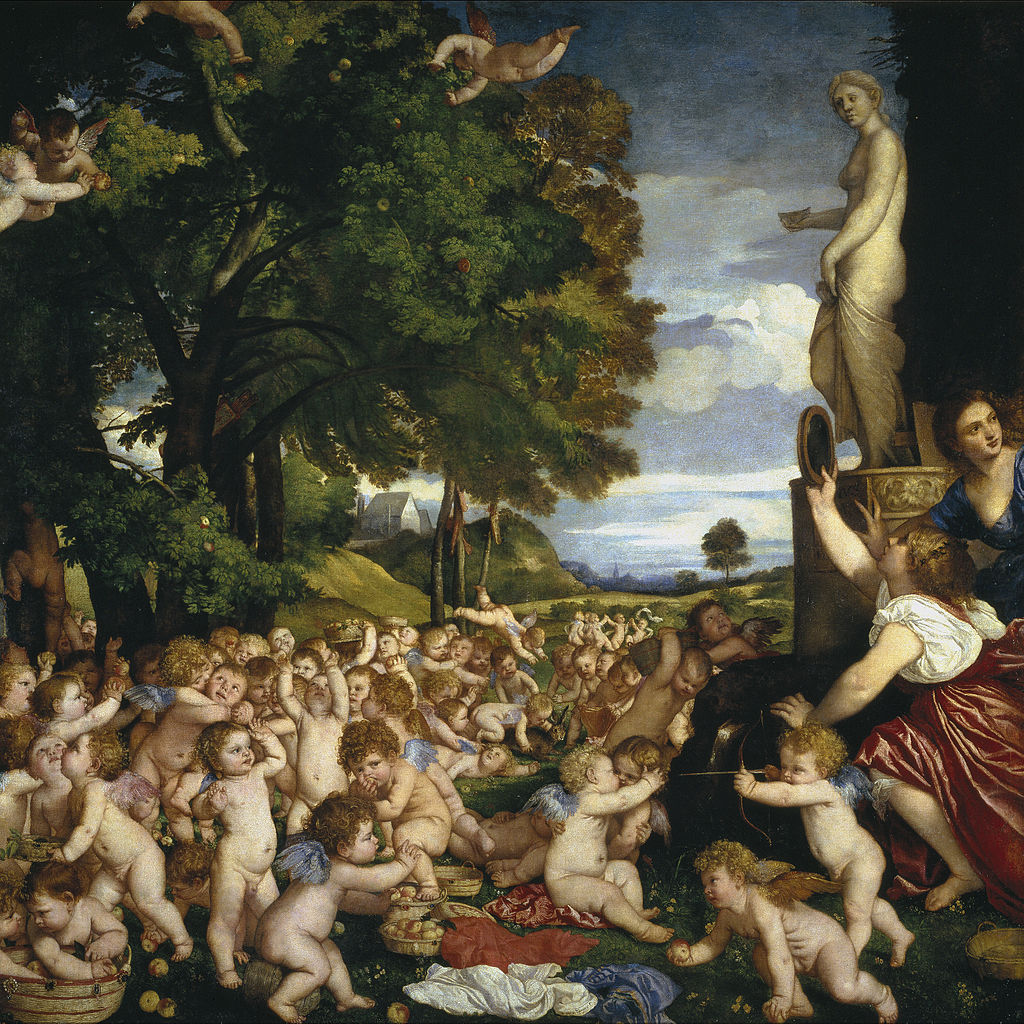| The Worship of Venus | |
|---|---|
 |
|
| Artist | Titian |
| Year | 1518-1520 |
| Medium | Oil on canvas |
| Location | Museo del Prado in Madrid, Spain |
| Dimensions | 68 in × 69 in |
| 172 cm x 175 cm | |
| Famous Paintings by Titian | |
| Rape of Europa | |
| Sacred and Profane Love | |
| Pastoral Concert | |
| The Assumption of the Virgin | |
| Christ Carrying the Cross | |
| The Flaying of Marsyas | |
| Allegory of Prudence | |
| The Worship of Venus | |
| Self-Portrait | |
| View Complete Works |
The Worship of Venus, is an oil on canvas painting which is now preserved and housed in the world renowned Spanish national art museum, Museo del Prado in Madrid. Titian was commissioned to do a series of paintings in 1516, by the Duke of Ferrara, which took him over a decade to complete. The paintings, destined for the Alabaster Chamber, were a series of Dionysian themes, one of which was The Worship of Venus.
Description and Inspiration
This richly colorful piece of artwork incorporates the subjects of love, fertility, regeneration in nature, and comic gesture, while presented with a great formal elegance. The Worship of Venus was Titian’s first painting in his commissioned series, and he based the content on ancient Greek mythology, and the writings of Philostratus, a Greek sophist of the Roman imperial period in the 3rd century AD.
The painting aesthetically describes a Roman rite of worship honoring Venus, the Roman goddess of love, beauty, sexuality, fertility, prosperity, and victory. On this day of worship, women would make offerings to the goddess Venus in order to cleanse themselves. In the painting you see two nymphs, or female nature spirits who were linked to Venus, standing to the right with a statue of Venus by their side.
Cupids were considered children of the nymphs, and they are plentiful in the painting. The cupids are found playing and expressing love in a meadow between the statue of Venus and a row of apple trees. Philostratus described cupids gathering apples in baskets with quivers of gold which they hung on the apple trees. This fresh and enchanting description is captured in The Worship of Venus with the playful and comic gestures of the small children, or cupids depicted.
Legacy
The compelling interpretation onto canvas, of pagan myth, portrays the writings of Philostratus, and is so convincing, that we see Greek mythology through Titian’s paintings even today. Titian’s revolutionary and brave styles, his unmatched use of color, and his gradually evolving artistic manner made him the most celebrated painter of the ancient world. The Worship of Venus is not only pleasing to the eye, but also describes through art a past time which will be preserved forever in our minds.